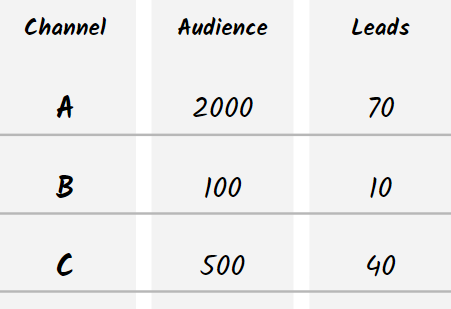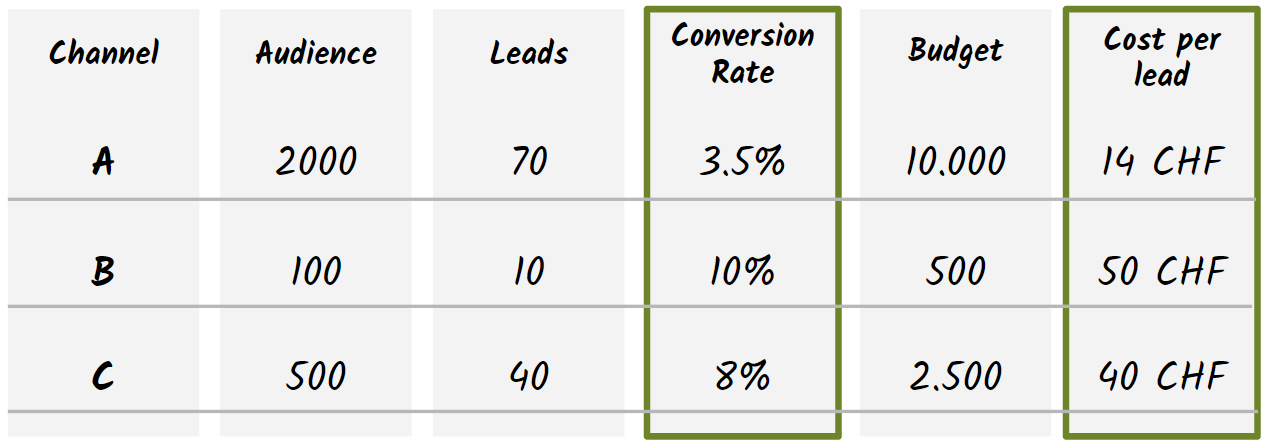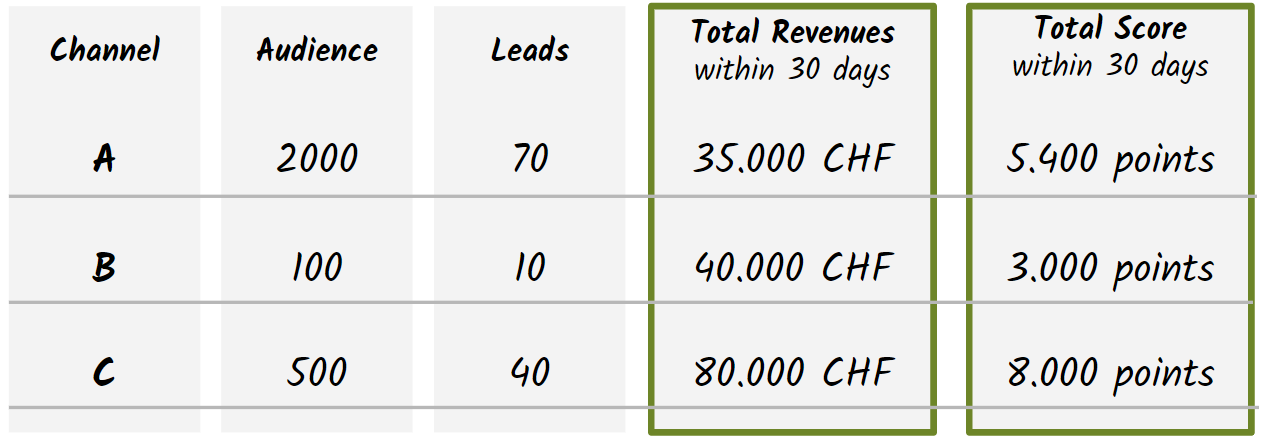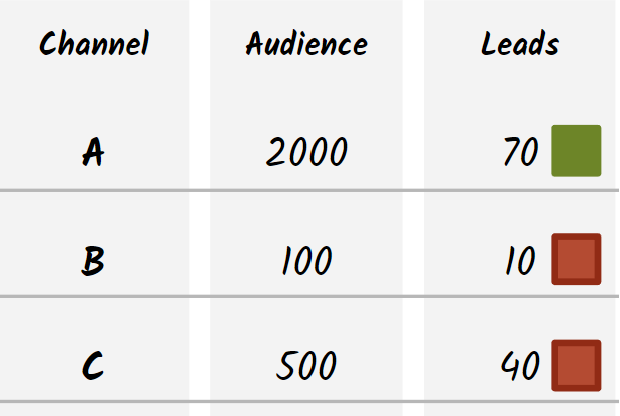The Importance of Choosing the Right KPIs
Analyzing conversions is a crucial aspect of any marketing strategy as it helps marketers understand the effectiveness of their efforts in turning leads into customers. Results can be analyzed in very different manors, depending on the situation and the role of the people that make the analysis. There is no right or wrong answer when choosing the right KPIs.
Example Context
Imagine a fictional company called “Simple Task Beta” just released a report available for download through a lead generation form on their website. To boost leads, they initiated a multichannel campaign using Google AdWords, a LinkedIn post, and a presentation at an exhibition. The target audience size was defined, and leads were tracked end-to-end for accurate measurement.
Now, let’s picture a meeting with various stakeholders, including the CEO, sales, marketing, finance, and operations teams, as they come together to discuss the initial results. Different opinions start emerging based on the diverse strategies employed.

How To Indentify The Most Relevant KPIs For Your Use Case?
Identifying the most relevant Key Performance Indicators (KPIs) for your specific use case involves a thoughtful and strategic approach. Begin by clearly defining your business objectives, ensuring they align with your overall strategy.
Take into account the diverse perspectives of stakeholders and prioritize KPIs based on their direct impact on your goals. Evaluate potential indicators using the SMART criteria—ensuring they are Specific, Measurable, Achievable, Relevant, and Time-bound. Collaborate with key departments, consider industry benchmarks, and map out the customer journey to pinpoint critical metrics.
It’s crucial to leverage available data sources, strike a balance between leading and lagging indicators, and regularly review and adjust your appproach when chosing the right KPIs.

At first, you can perform basic calculations
The simplest approach to kick off KPI analysis is by utilizing easily collectible raw data, such as the number of leads or the budget. This provides an initial overview of the situation, serving as a straightforward starting point for diving into the analysis.


Conversion Rate
The conversion rate is a vital metric in marketing that reflects the percentage of website visitors or users who take a desired action, such as making a purchase, signing up for a newsletter, or filling out a form.

Cost per Lead
The cost per lead (CPL) is a key metric in marketing that quantifies the expense incurred for generating a single lead. It is calculated by dividing the total campaign cost by the number of leads acquired.
Have A Look At The Outcome Generated
Expanding the KPI analysis to include the value of leads and the lead score adds a deeper layer of insight. While raw data like the quantity of leads and budget offer a basic view, considering the value and scoring of leads provides a more nuanced understanding of their quality and potential impact on overall performance.
Evaluating these additional factors enhances the depth of the analysis when choosing the right KPIs. It offers a more comprehensive perspective on the effectiveness of your strategies.


Value of Leads
By assigning a monetary value to leads, businesses gain a clearer understanding of their worth in the conversion process. This helps in prioritizing efforts towards leads that are more likely to contribute significantly to the bottom line, refining strategy for maximum impact.

Lead Score
Assigning scores based on various criteria such as engagement, demographics, or behavior allows marketers to prioritize leads based on their likelihood to convert. This nuanced approach aids in tailoring marketing efforts to specific segments, optimizing resources, and increasing the overall efficiency of the lead conversion process.
Absolute Values vs. KPIs Per Lead
Instinctively, one might gravitate towards using data per lead as a benchmark. However, in certain circumstances, particularly in the dynamic phases of a startup or during periods of growth, the cost per lead may take a backseat to the overall revenue generated by a campaign. In such scenarios, the emphasis shifts to the capability of different channels to produce leads, regardless of the associated costs.
This is especially pertinent when the primary objective is expansion and acquiring new customers, where prioritizing the capacity of a channel to consistently generate leads becomes a strategic consideration, even if it comes at a higher cost. Ultimately, the focus shifts from stringent cost per lead metrics to the broader goal of sustained revenue growth.

Create KPIs About Hidden Costs of Each Channel
Establishing Key Performance Indicators (KPIs) that specifically address hidden costs is a strategic move that can significantly impact the overall financial health of a project or campaign.
While visible expenses are typically easier to track, it’s the concealed or indirect costs that often exert a substantial influence on the bottom line. By choosing the right KPIs that shed light on these hidden expenditures, businesses can gain a more comprehensive understanding of the true cost of their initiatives.
Channel Management Costs
Staff / Time
Campaign Update
Texts / Pictures
Client Support
Customer Service
Reporting Tool
Integration / Extraction

